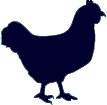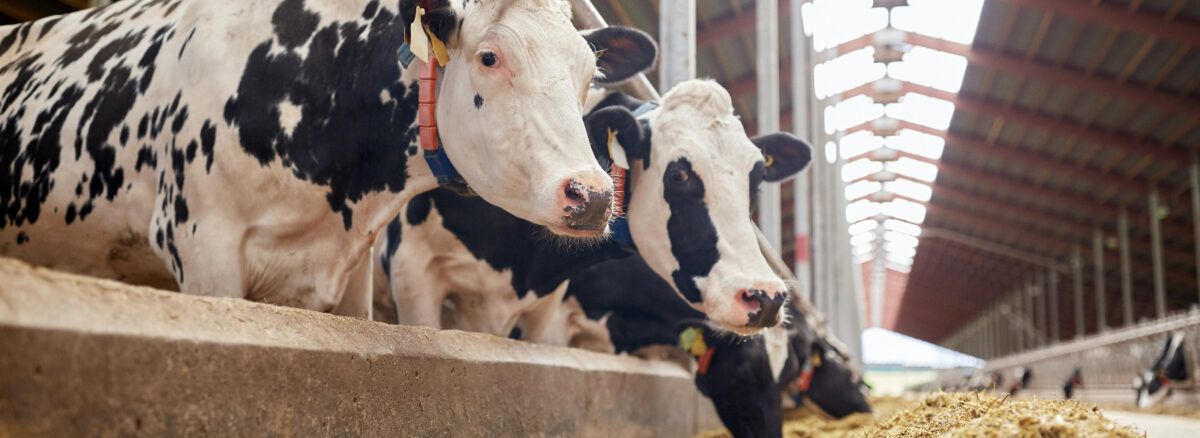Techniques and Practices Necessary For Responsible Cow Care
If you are planning on providing lifelong care for cows, either in a sanctuary or microsanctuary environment, the hands-on training you’ll need and the standard care practices you must develop for your residents are much more rigorous than what non-sanctuary cow resources may have led you to believe! Taking in cows without having the appropriate skills and policies in place could threaten their health and well-being, as well as the health of other residents at your sanctuary.
This introductory resource is not intended to dissuade you from rescue, but merely provide a perspective on what a sanctuary must be able to commit to in order to provide the best life for a cow.
Cow Care That Should Be Taught by An Expert
Responsible cow care means being able to fully understand and perform safe handling and healthcare techniques, as well as being able to react rapidly and effectively in the event of an emergency. Anyone who oversees regularly providing care to cows should be taught the following techniques from a compassionate cow care expert or a qualified veterinarian.
Healthcare Basics
- Performing a cow health examination: All of the cows in your care need to be regularly examined from their head to their hooves in order to catch any health problems early on for successful treatment. An expert or veterinarian can give you hands-on training so you can give examinations quickly, efficiently, and with the least stress possible for the cow.
- Safely being around and handling a cow: There are a number of nuances that an expert must demonstrate for you in order to prevent potentially serious health and safety consequences from mishandling a cow or misjudging their behavior. Certain individual cows may require unique handling techniques, due to their size, personality, history of trauma, or health status.
- Evaluating a cow’s rumen: Rumen problems such as bloat or grain poisoning are unfortunately common in cows and can quickly cause death if left unmanaged. For this reason, you must learn how to evaluate a cow’s rumen, and quickly discern between healthy and abnormal rumen operation in order to intervene quickly if something’s wrong.
- Evaluating a cow’s foot and hoof health: Cows can develop a number of foot and hoof problems throughout their lives, either as a result of overgrown hooves, environmental problems, infection, or old age. Failing to identify cow foot issues early could lead to permanent injury and a greatly reduced quality of life for the individual cow.
- Evaluating a cow’s droppings: Abnormal cow droppings can be a warning sign that something is amiss in them, be it a problem with their nutrition, an illness, or a parasitic infection. It is important to learn what healthy cow poop typically looks like for the individual cows in your care throughout the day so that abnormalities can be caught and evaluated early on. Early intervention for many cow health issues can be lifesaving.
- Maintaining and trimming a cow’s hooves: Safe hoof maintenance and trimming is a health essential for cows that should be performed by a professional farrier or experienced veterinarian. A professional farrier will have all the necessary equipment, including a restraint system to safely trim hooves and access the bottom of the cow’s feet. A veterinarian, while likely quite capable of trimming cow hooves, will most likely need to use ropes and/ or sedation to access the bottom of a cow’s feet, and both come with risks. Improper technique could hurt or permanently injure a cow and could be quite dangerous for the humans involved. It can be helpful to have a chute system in order to safely move cows into the farrier’s restraint system, and a chute will come in handy for other times when you must restrain a cow for treatments or veterinary exams.
- Foot illness management in cows: Foot rot, hoof abscesses, and other foot illnesses are highly common in cows. If left untreated, the illness could spread up a cow’s leg and cause permanent damage. Treatment is dependent on the kind of infection and how much its progressed into the cow’s foot. Failure to learn appropriate foot and hoof treatment techniques could potentially lead to greater health problems than the infection itself.
- Treating mites, flies, parasites, and lice in cows: Although it may seem straightforward to treat individuals for these problems, you should have someone demonstrate dosage and technique until you are fully comfortable with treatment (and know when not to treat for parasites to prevent resistant strains from propagating). Some cows may become seriously ill or die if they are exposed to too much pesticide or anti-parasitic medication. Flies around cows must also be managed with effective strategies, as they can spread serious diseases like pinkeye.
- Handling a bloated cow: You must learn exactly what to do if a cow is suffering from bloat or grain poisoning, including rapid evaluation and response. If a cow is exhibiting signs of extreme distress, you may only have a few minutes to administer lifesaving treatment. A veterinarian is not likely to be able to come to you in time, so caregivers must receive training on what to do long before any emergencies.
- Administering oral and injectable medications and gastric intubation for cows: You must be shown how to safely administer oral medications to a cow without causing them undue stress or accidentally choking them and must also be shown how to administer injectable medications. While oral medications are often preferred and administration is less stressful to both the cow and the human, there are instances when an injection is necessary, so you must learn how to administer properly. Gastric intubation (such as to intervene in cases of bloat or grain poisoning) absolutely must be taught by an expert. The threshold for lethal mistakes is very high due to their biology.
- Establishing regular record keeping policies for cows: Keeping detailed records of cow residents from intake until they leave your sanctuary is a crucial part of giving them the best healthcare as well as providing an extra layer of legal protection to your sanctuary in certain circumstances.
- Creating and following a new cow arrival protocol: Herd safety means following practical biosecurity and quarantine guidelines when you bring a new resident cow onto your sanctuary grounds, including evaluating newcomers for foot rot and Johne’s Disease. Failing to have an appropriate intake process could pose a serious risk to your residents.
- Daily checkups for each individual: Although it does not have to be as rigorous as a health examination, each of the individual cows you take in must be visually looked over at least once a day (such as during feeding time) to watch out for early signs of illness or other health concerns. It is not responsible to take in cows and not be able to provide this minimum standard of care for each of them.
- Establishing a vaccine protocol: Talk to your veterinarian to see what vaccines they recommend based on your area. Many sanctuaries we’ve talked to vaccinate their cow residents for pinkeye (which must be administered prior to the fly season), rabies, and use a combination vaccine that protects against diseases caused by certain strains of bovine viral diarrhea (BVD), parainfluenza 3 (PI3), bovine respiratory syncytial virus (BRSV), leptospirosis, and infectious bovine rhinotracheitis (IBR). Your veterinarian may also recommend using a clostridium and tetanus combination vaccine (also known as the CDT vaccine), and there may be additional vaccines they recommend protecting young calves from disease. Be sure your veterinarian fully understands your mission and how the sanctuary functions. There are certain vaccines that might be recommended to most of their clients, but are not necessary for cows who will never breed or who spend most of their lives at the sanctuary rather than frequently going to exhibitions where they are exposed to many other animals with unknown backgrounds.
- Regular fecal testing of cows: Cows can fall victim to a host of dangerous ailments and diseases that may not present symptoms visibly until they’re too late to treat. You must create a fecal testing schedule and follow it for all cows to head off health challenges early on.
- Creating a plan for isolation or quarantine: If a cow becomes ill or injured and needs time away from the rest of your residents to heal or prevent the spread of disease, you will need an appropriate area reserved to isolate them. Without space to isolate an ill or injured resident, you risk the spread of disease or further injury to the individual.
- Providing appropriate living space for cows: You must give cows an appropriate living space, with sunlight, clean air, appropriate temperature and humidity control, and cow-safe fencing. They should have a safe place to roam and enjoy enriching activities. Forcing cows to live in cramped, dark, muddy, dirty, icy, or dangerous conditions is unacceptable. You should never take in so many cows that they lack adequate personal space! Ensure that their pasture is free of any plants that are toxic to cows!
- Providing appropriate food, water, and supplementation for cows: You must feed cows a healthy diet suited to their individual needs. They need clean water that doesn’t freeze over in the winter, appropriate forage or hay, minerals, and, depending on your residents’ specific needs, nutritional supplementation. It’s unacceptable to knowingly feed them food that causes health problems or excessive weight gain. You must be willing to adjust their food and supplementation if a cow needs their diet modified to rectify health challenges as well. A sanctuary must never feed a cow with food designed to make them larger for human consumption.
- Regular cleaning and maintenance of cow living spaces: You must establish and follow a regular cleaning schedule for the spaces where cows live and sleep. Ignoring regular cleaning and bedding replacement can cause cows to develop a host of avoidable illnesses such as foot rot, parasites, pneumonia, or social challenges like bullying.
- Predator and rodent proofing of cow living spaces: It is unacceptable to allow a cow to be attacked by predators in their own living space, or to catch an illness or get bitten by rodents. You must implement strategies to prevent predators and rodents from entering their living space and regularly review the effectiveness of your efforts. Young calves who do not have their mother must have a safe place where they are put every evening to prevent them from being hurt or killed outside overnight.
- Regular hardware disease mitigation: You need to keep cows safe from hardware disease by regularly checking their areas for potentially dangerous materials that they may ingest. Have a discussion with your veterinarian about using rumen magnets as an added layer of protection.
- Honoring the needs of younger, older, or Johne’s-positive cows: Cows who are very young, older, or are confirmed to have Johne’s Disease, have unique care needs that must be accommodated in order to thrive. You should not take in cows with special care requirements until you understand what they need and have an environment and policies in place for them
- Providing appropriate veterinary care and medication for cows: When you give sanctuary to a cow, you are committing to providing them a high quality of life and individual care. Part of this means having a qualified bovine veterinarian who understands cow care and is willing to treat health problems, manage pain, and provide compassionate end of life care when necessary. It is unacceptable to take in cows and deny them medical attention or withhold pain management.










